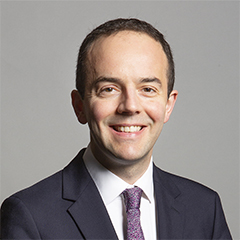Overview for Horsenden Lane North, GREENFORD, UB6 7QL
Summary for Horsenden Lane North, GREENFORD, UB6 7QL
Roadworks near UB6 7QL
Road Safety near UB6 7QL
Details of personal injury accidents in and around Horsenden Lane North, UB6 7QL that have been reported to Metropolitan Police Service over the past 20 years.
Traffic Levels near UB6 7QL
View traffic levels near Horsenden Lane North, UB6 7QL from official Department for Transport counts.
Images taken near to Horsenden Lane North, UB6 7QL and the surrounding area
Please click the More button for more images, licensing and image copyright information.
Member of UK Parliament
This postcode is in the Ealing North parliamentary constituency.
Ealing North is a constituency in London, England. The seat has been held by James Murray (Labour) since July 2024.

Most Recent House Sales for Horsenden Lane North, UB6 7QL
No recorded house sales or transfers for this postcode.
Electricity Supply Emergency Code
Local Petrol Station Prices
Coordinates for UB6 7QL
Residents at UB6 7QL
Sunrise and Sunset at UB6 7QL
Traffic Emission Zones
Historical Weather Summary
| Clear | 17.72% |
| Cloudy | 76.42% |
| Rain | 4.49% |
| Windy | 1.25% |
| Other | 0.12% |
Population
Deprivation Index
the more deprived the postcode
Companies Registered at UB6 7QL
Postcode Details for UB6 7QL
Recent Updates
|
28 Feb 2025 Energy Performance Certificates (England and Wales) updated January 2025 |
|
17 Feb 2025 Schools Data Updated for February 2025 |
|
10 Feb 2025 Police and Crime data updated for December 2024 |
|
8 Feb 2025 Energy Performance Certificates (England and Wales) updated December 2024 |
|
8 Feb 2025 Energy Performance Certificates (England and Wales) updated November 2024 |
|
2 Feb 2025 Sold House Price data updated for December 2024 |
|
16 Jan 2025 Schools Data Updated for January 2025 |
|
3 Jan 2025 Police and Crime data updated for November 2024 |
Random Postcodes
Want an idea of what is in our extensive website? Try somewhere completely random!
The Rural/Urban classification is based upon data collected during the 2011 Census and released in August 2013 and is categorised into 6 distinct classes.
[A] Urban Major conurbation: A built up area with a population of 10,000 (3,000 in Scotland) or more and is assigned to the major conurbation settlement category.
[B] Urban Minor conurbation: A built up area with a population of 10,000 (3,000 in Scotland) or more and is assigned to the minor conurbation settlement category.
[C] Urban City and town: A built up area with a population of 10,000 (3,000 in Scotland) or more and is assigned to the city and town settlement category.
[D] Rural Town and fringe
[E] Rural Village
[F] Rural Hamlet and isolated dwelling
The Index of Multiple Deprivation (IMD) is the official measure of relative deprivation.
The index is based on 39 separate indicators across seven distinct domains (Income; Employment; Health and Disability; Education, Skills and Training; Crime; Barriers to Housing and Services; Living Environment) to provide an overall measure of multiple deprivation and is calculated for every neighbourhood.
The index is relative rather than an absolute scale and so a neighbourhood with a score of 10 is more deprived than one rated 20, but this does not equate to being twice as deprived.
Please note: Different indices are used in England, Scotland, Wales and Northern Ireland and so comparison of scores from neighbourhoods in different countries should not be undertaken.
These figures report on incorporated UK companies only that are registered at this postcode and do not include sole-traders, partnerships or overseas organisations.
The population figure shown for your area are an estimate provided by the Office for National Statistics and is rounded to the nearest 1,000.
The estimates are derived from the Annual Population Survey (APS) which is the Labour Force Survey (LFS) plus various sample boosts.
There are 32 London boroughs. They provide nearly all the services in their area. However, the Greater London Authority (GLA) provides London-wide government, including special responsibility for police, fire, strategic planning and transport.










